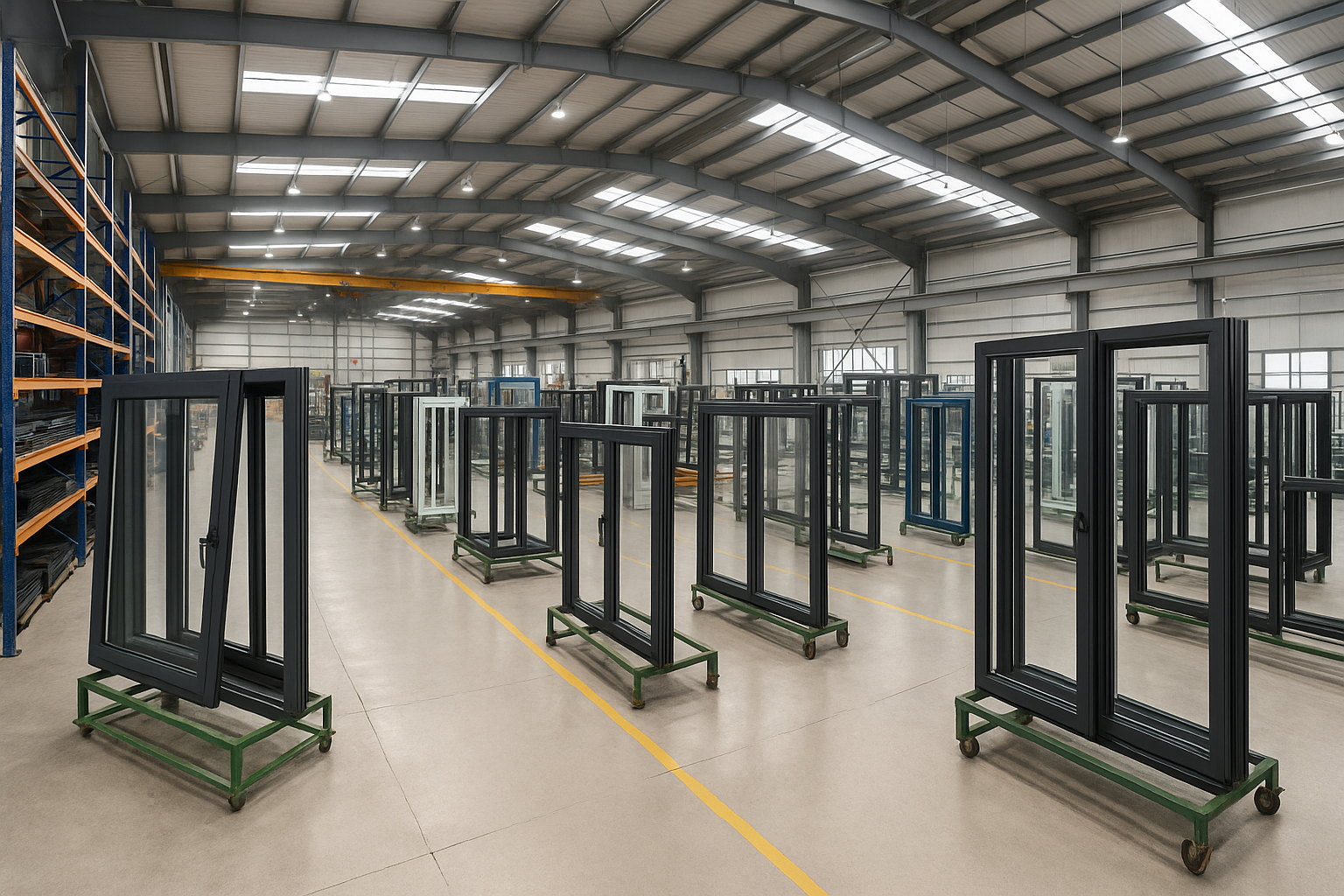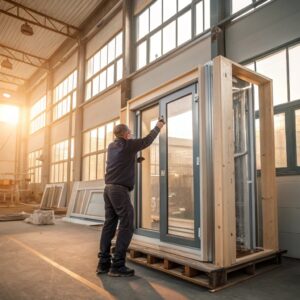
How many types of aluminum windows are there?
How many types of aluminum windows are there?
Stuck choosing the right aluminum window? Feeling overwhelmed by options and specs? You’re not alone—navigating all the different window types can get confusing, fast.
There are several types of aluminum windows, including Casement windows1, Sliding windows2, Awning windows3, Tilt and turn windows4, Bi-fold windows5, Fixed windows6, and Stacking windows7 windows—each serving specific design and functional needs.
I know firsthand just how tricky it is to match window types to jobs—whether you're a contractor like Michael balancing installation challenges, or a homeowner like Emily dreaming up her perfect renovation. Before picking your window, let’s break down the options.
Which are the best quality aluminium windows?
With so many choices on the market, how do you know which aluminum window truly stands out in quality?
The best quality aluminum windows offer superior Thermal windows8 insulation, strength, energy efficiency, and design flexibility; leading systems, like Aluprof MB-86, are especially recognized for their performance.
For me, quality always means going beyond shiny finishes or thick frames. I’ve seen “premium” windows that end up leaking or letting in cold drafts—especially when the right performance specs aren’t there. That’s why the best windows are those designed with
- thermal breaks (insulating barriers inside the frame),
- multi-point locking systems,
- and double or triple glazing.
Let’s take the Aluprof MB-86 system, for example. On major projects I’ve managed for export, developers like Leon love this system because it meets strict energy-saving standards, resists corrosion, and handles harsh climates without trouble. Pairing high-quality hardware with advanced glass packages, such products not only meet regulations across Europe, North America, and the Middle East—they actually exceed expectations in everyday use.
If you’re a dealer, like Ahmed, keep an eye out for systems with reputable certifications (CE, NFRC, etc.) and request thermal performance test results before making a recommendation to your clients.
Which grade of aluminium is best for windows?
Maybe you’re curious why some window frames feel sturdier, look sleeker, or just seem to last longer. The answer often lies in the grade of aluminum used.
Grades from the 6000 series—especially 6060, 6061, 6063, and 6005—are best for windows because of excellent corrosion resistance, great strength, and easy fabrication.
I’ve toured many extrusion plants—from smaller workshops to large-scale factories—and the consistent thread is that the 6000 series is king for window and door applications. Here’s a quick breakdown:
| Alloy | Key Properties | Typical Use |
|---|---|---|
| 6060 | Corrosion-resistant, easily extruded | Scenic doors, general frames |
| 6061 | High strength, excellent machinability | Structural parts, heavy-duty windows |
| 6063 | Superb surface finish, great formability | Fine profile frames, modern fenestration |
| 6005 | Strong, fatigue-resistant | Large commercial windows, sliding doors |
Within our own manufacturing, we use 6063 for most residential and high-end commercial windows. It’s easier to create thin profiles that still provide excellent insulation and strength (and let’s face it, those sharp, slim looks are always in demand!). For bigger jobs—think curtain walls or stadium installations—assemblies often use 6005 or 6061 to handle extra loads.
If you’re ever unsure which grade appears on a product spec, just ask your supplier—transparent partners should always provide alloy certificates upon request.
Are all aluminium windows the same?
Walking through a showroom or browsing suppliers online, you might wonder: do all aluminum windows perform equally, or do the differences really matter?
No, aluminum windows vary widely in design, materials, and performance. Differences in alloy, insulation, manufacture, and features can change energy efficiency, durability, and overall value.
One of the biggest mistakes I see is assuming all aluminum windows are created equal. From my years in the industry, I’ve seen identical-looking frames perform very differently when exposed to wind, rain, or salt air.
Here are core differences to watch for:
- Alloy Composition: Cheaper windows might use recycled or lower-grade alloys that dent or corrode faster.
- Thermal Breaks: Quality frames have a polyamide strip inside for insulation; basic models skip this, making them prone to condensation and heat loss.
- Glass Packages: Energy ratings depend on the right combination of double/triple glazing, spacer types, and gas fills.
- Accessories & Finish: Durable powder coatings and branded hardware outlast generic versions by years.
For big commercial projects, Leon’s team checks not just specs but also factory inspection records, certifications, and past project case studies before ordering. Emily, as a homeowner, usually focuses on comfort, insulation, and achieving that high-end look with peace of mind on after-sales support.
So no—aluminum windows are not the same. Be sure to ask about every layer: from raw material source to frame design, glass performance, hardware brand, and even paint warranties.
The world of aluminum windows is much larger and more varied than it seems—choose carefully to match each project’s needs, and always ask the right questions.
- Side-hinged windows that open outward, providing excellent ventilation and unobstructed views. ↩
- Windows with one or more panels that slide horizontally, ideal for spaces with limited room for window operation. ↩
- Top-hinged windows that open outward from the bottom, allowing ventilation even during rain. ↩
- Windows that can tilt inward for ventilation or turn inward for easy cleaning, offering versatility and security. ↩
- Windows with multiple panels that fold and stack to create a wide opening, connecting indoor and outdoor spaces seamlessly. ↩
- Fixed windows that do not open, used to provide natural light and unobstructed views. ↩
- Windows with multiple panels that slide and stack to one side, offering unobstructed panoramic views. ↩
- Windows designed with insulating materials to reduce heat transfer, enhancing energy efficiency. ↩
You may also be interested in:

How long do aluminum clad wood windows last?
High-quality aluminum-clad wood windows I've often wondered about the longevity of aluminum-clad wood windows1, especially when considering them for my projects. Aluminum-clad wood windows can last up to 30-40 years

Hi there! I'm Thea, mom and hero to an adorable 5-year-old boy. By day, I'm a seasoned pro with 10 years in the window and door industry, going from sales to owning my own factory. Here to share what I've learned—let's grow together!
Contact with me
No-nonsense Guide for Newbies
- ✔Master mold basics quickly
- ✔Avoid costly beginner mistakes
- ✔Gain industry-ready insights
- ✔Boost technical understanding
- ✔Accelerate business growth
